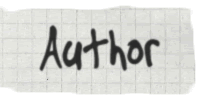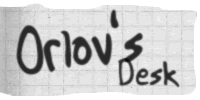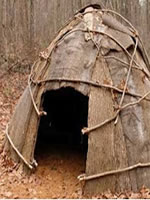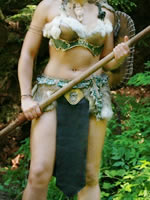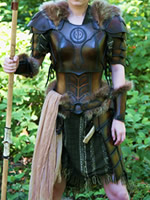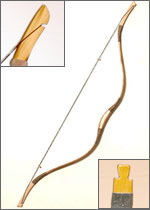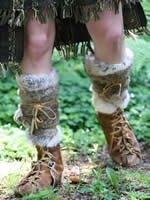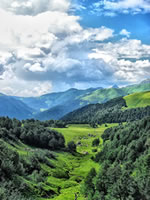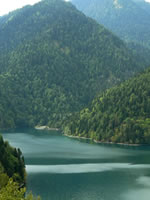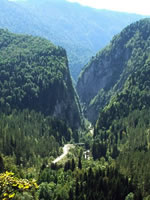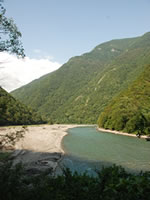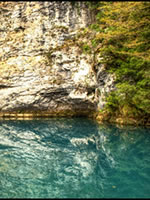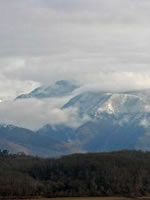x
Images of The Amazon Chronicle
The following images are used to as examples to give the reader a better mental picture of The Amazon Chronicle.
Note: Clicking on the images will open a larger/expanded photo.
The Tribe
| Race | Notes |

|
Predecessors of the once famous Circassian Beauty, both the male and female full-blooded Amazoi were documented as having fair (light colored) skin and black hair. Decendants of Tiya, would have far-eastern traits. Decendants of Shaymo or Wayu, would have East-Indian traits. Decendants of New Comers, would have Indo-European traits. |
| Build | Notes |

|
Contrary to the evolved myths of the 'Amazon Warrior' being 6ft tall, big (or single) breasted, with huge muscles, and visually intimidating; the Amazoi were of average height for their time (around 5ft). Their build would be more comparible to a present day triathlon athlete rather than one of a body-builder. Still, their well-rounded diet of meats, vegetables, fish, nuts and fruits combined with their physical training would have given them a reasonably larger frame than their female counterparts of other tribes. |
The Armour
| Amazoi Bronze Armour | Notes |
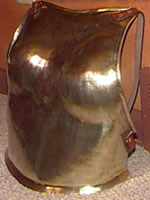
|
The simple armour was given to the Amazoi women by allied tribes during the war in the Southlands. It quickly replaced the softer (and smellier) leather armour of the past by reasons of better defense and status. |
| Amazoi Round Shield | Notes |
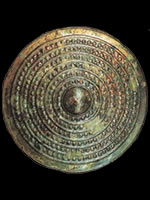
|
Simply called lari-tuton meaning Small Shield, it was usually made by a single piece of metal and used as added protection to the back or more as a second weapon than protection when faced against heavy swings of a sword. Thought to resemble the Turtleback Shield of India as they were learned by Taysha from the Anshe and handed down to the Amazoi. Most times they were decorated with animal furs. Clicking on the image will show Daela and her shield. Obtained through trade with the Wedic, it was silver-rimmed and covered with furs from the Caucasus Leopard. |
| Amazoi Rectangular Shield | Notes |
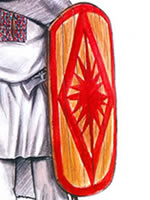
|
Called rau-tuton meaning Thunder Shield, it was usually made by several pieces of wood joined by metal strips and was thought to be extremely heavy. Used much like the Roman legions of establishing a wall for the enemy to strike against, they were used more of a protective distraction while jabbing with their short swords or attacks from the Spear Wielder. There are literally no examples to be found. The closest image is the rectangular shields of the ancient Slavs seen here. Though the Amazoi shield would cover from shoulder to knee and from shoulder to shoulder. Thought to to be a wider version of the Witham Shield found in England |
The Weapons
| Amazoi Arrows | Notes |
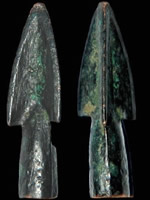
|
Due to the lack of metals, the use of stone arrowheads was first used by the Amazoi of pre-Massacre for more common use. Taysha carried out this tradition and at one point forbade the use of metal tipped arrows after witnessing what was obviously a death due to metal poisoning. Use of metal arrowhead began to return as the Amazoi moved south and experienced the necessity of metal against various types of armour. More images can be found: here |
| Amazoi Axe | Notes |

|
The design is believed to be the popular and simplistic design that was widely used from the Steppes to Eastern Europe. It can be seen on Greek vases depicting the Scythians, and was used as both a tool and a weapon. |
| Amazoi Sword | Notes |

|
The blade of the Amazoi sword was usually about the length from the owner's fingers to his/her elbow and was curved up at the point. The tactical use was much like the Roman gladius in that it was meant for stabbing instead of hacking. It was usually fastened behind a shield or at the small of the back of heavy armour. Each pattern was unique to the owner, who most likely forged the weapon his/herself. |
The Clothing
| The Scarf | Notes |
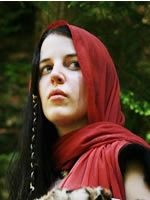
|
mina One of the more essential items of the Amazoi, it was used to:- keep warm - to wipe sweat - dry off after a wash - protect the head from sun - as a table across crossed-legs - to protect the face from mosquitoes The origins of the thin material of the Amazoi scarf first came from both the Wedic and Anshe tribe (who retained the knowledge of creating fine fabrics) and from the annual trader along the Loop of Reck-chal. The Amazoi later turned to the merchants of Torik for supply of fine fabric direct from the Southlands and across the sea. |
| Heavy Pants | Notes |

|
bier tukar Despite it's name, the cloth that made up the Heavy Pants could be thick or thin. Usually separated into penu-na tukar (Winter Pants) and tolra-na tukar (Summer Pants). The distinctive feature being it's baggy-ness This type of pants originated from previous generations of the Amazoi and were favoured when training as their loose fit was cool and made movement easy. |
| Light Pants | Notes |

|
upla tukar Despite it's name, the Light Pants were generally made from leather to withstand harsher use in the forest. The distinctive feature was it's tighter fit, resembling the modern 'pant'. This type of pants was introduced by Taysha who created the design out of frustration of constantly catching her Heavy Pants on branches. These pants were made of either leather or a leather-fabric mixture and used on hunting or scouting. |
The Surroundings
| Book I | Taysha's Escape |
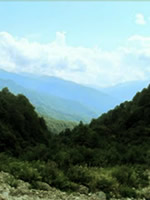
|
Looking back on the valley from where she came. (Clicking the photo will show rough trail of Taysha's journey) |
| Book IV | The Coast of the Great Water |
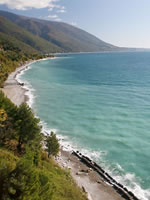
|
This view is up coast of the Black Sea. (Clicking the photo will show details of location) |





